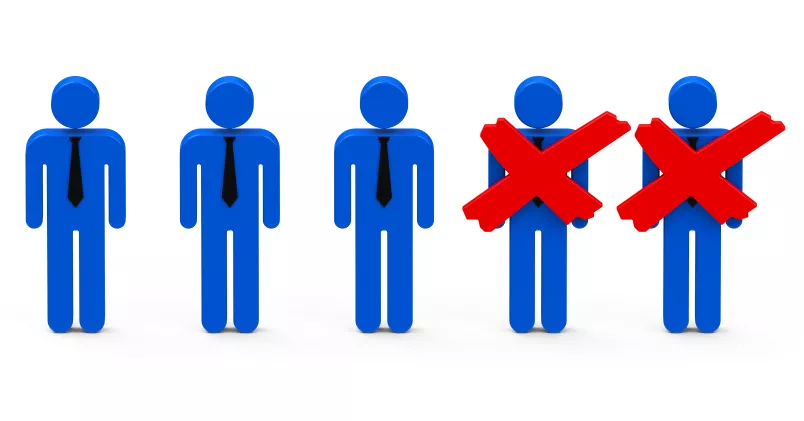Att söka nytt jobb är ett arbete i sig. Men om du vill göra det enklare finns nya sätt att ta den senaste tekniken till hjälp. Testa ett AI-verktyg föreslår Edvard Danielsson, karriärvägledare på Manpower Matchning. AI-tjänster kan göra hälften av ansökningsjobbet åt dig.
– Man behöver inte vara en teknisk person eller programmerare, säger han.
Edvard Danielsson har själv lagt tusentals fritidstimmar på AI-verktyg och delar generöst med sig av sina bästa tips:
1. Välj ett AI-verktyg du gillar
Steg ett är att välja en AI-modell som passar dig. De vanligaste och största är Chat-GPT, Copilot och Gemini. De finns i både gratisversioner och betalversioner , med fler funktioner.
AI-assistenterna kan användas som mobilappar eller hemsidor, både på datorn och mobilen. Laddar du ner appen - kolla att den kommer från rätt användare: Open AI (Chat-GPT), Google (Gemini) eller Microsoft (Copilot) då det finns fuskversioner.
När du är appad och klar kan du gå vidare till nästa steg.
2. Låt AI putsa ditt cv
Börja med att kopiera och klistra in annonsen till jobbet du söker i språkmodellen du valt. Du kan också lägga in flera annonser för andra liknande jobb som du är intresserad av.
Kopiera och klistra sedan in ditt cv i AI-tjänsten. Men lyft bort dina personuppgifter ur dokument innan du laddar upp dem till en AI-tjänst. Det gör du av säkerhets- och integritetsskäl. Du vet inte hur persondata lagras och kan användas i framtiden.
Ge sedan AI:n prompts – instruktioner - steg för steg– som kan förbättra din ansökan. Du kan till exempel be tjänsten att ”kategorisera dina kompetenser” eller att skriva ”en sammanfattning baserad på mitt CV och min målsättning att arbeta som X” – (som ingenjör – eller vad det nu är för roll du söker).
Du kan också be AI:n att göra texten "mer slagkraftig och kortfattad", eftersom en vanlig miss är att skriva för långt. Skrivroboten kan också hjälpa dig skapa en bra profiltext på Linkedin utifrån texten i ditt cv.
3. Matcha ditt personliga brev med jobbannonsen
När cv:t är komplett - använd AI för att skriva ett proffsigt personligt brev, eller i alla fall ett utkast. Kopiera och klistra in jobbannonstexten och ditt numera finslipade cv från steg 2 i appen.
Be AI-assistenten att matcha ditt cv med annonsen och sammanfatta matchningen i tre punkter.
I nästa steg be appen ställa fem frågor till dig om hur du är som person och som kollega, dina drivkrafter att söka jobbet?
Be därefter AI-tjänsten skriva ett utkast på personligt brev där texten är baserad på cv-matchningen och svaret på frågorna.
4. Fall inte i klysch-fällan
En risk med AI-genererat språk är att det kan kännas opersonligt och amerikanskt för en svensk arbetsgivare. Ett personligt brev ska ju vara just personligt.
Skriv alltid några egna rader som berättar om just dina drivkrafter och hur du är som medarbetare och medmänniska. Annars finns risk att brevet blir opersonligt och torrt, som en ultraprocessad mikromatlåda.
5. Prompta som ett proffs
Att ge en AI bra instruktioner – så kallade prompts – är en stor kunskap i sig. Ge alltid språkverktyget steg-för-steg-instruktioner. Be alltså inte om allt på en gång utan dela upp det.
Var extremt tydlig med vad du vill ha hjälp med och exakt hur du vill ha det: Tänk att AI:n är som en ny kollega eller praktikant som inte vet så mycket om arbetsuppgiften.
Vill du få ett mer vardagligt eller mer formellt språk – skriv det i instruktionen!
6. Tänk kritiskt – AI kan göra fel
Läs alltid igenom vad en AI föreslår. Tänk kritiskt. AI kan göra fel och överdriva.
Språkmodeller låter självsäkra men ibland hittar de på fakta och kryddar språket. Det händer att AI med övertygelse föreslår felaktigheter, likt en mänsklig hjärna som hallucinerar eller tänker fördomsfullt efter att ha intagit ensidig information.
I framtiden blir det en viktig kompetens att kunna granska AI-genererade förslag med kritisk blick, spår karriärvägledaren Edvard Danielsson. AI är ändå byggd av och på människan – en varelse som nyss lärt sig flyga ut i rymden, men inte lyckats skapa fred (än) på jorden.













